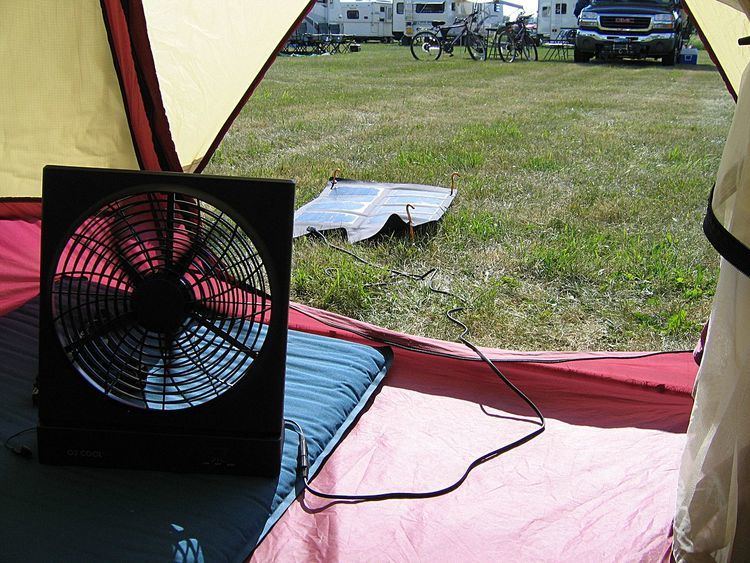 | ||
A solar fan is a mechanical fan powered by solar panels. The solar panels are either mounted on the device or are installed independently. Solar fans mostly do not require secondary power sources other than solar power, as most of them are used for cooling purposes during day time. Some types are also used for heating purposes. It runs the fastest when it is the hottest outside providing savings on air conditioning costs.
Contents
Applications
Attic heat is caused by the sun baking down on the roof surface. This sunlight causes the roofing material to heat up, thus transferring the heat into the attic via thermal transfer. The buildup of heat is generally dissipated by normal convection, i.e.: as the air is heated it expands and rises, flowing out of the attic through vents placed at or near the peak, while fresh air is pulled into the attic from intake vents that are generally in the eave (soffit) area. However, most roof vents are inadequate at expelling the heat and require the use of a powered vent fan to remove heat effectively. A solar powered attic fan is an effective way to remove attic heat using only the power of the sun to run the fan.
Solar-powered attic fan - roof mounted
A typical roof-mounted solar attic fan will be effective in removing excessive heat from the attic. When mounted near the peak the solar fan forces hot air out while pulling fresh air in via eave/soffit vents. This exchange of air keeps the attic space from overheating.
Solar-powered attic fan - gable mounted
It is similar to the roof mounted solar fan, except that its installation is a little different. Most attic fans are installed on the roof surface, whereas gable fans are installed in the gables, inside the attic and behind an existing louvered gable vent as the name suggests. They are mostly installed in places like garages or barns and other storage places where heat and moisture are usually present. These types of fans are generally installed behind intake grills to provide ventilation. Gable Solar Fans are usually installed high on the gable close to the ridge and are also coupled with soffit or roof vents for well-balanced intake and exhaust air avenues. The airflow depends upon the level of sunlight when there is more sunlight, the airflow will be more resulting in enhanced cooling. It is also capable of lowering the air conditioning costs by cooling the attic.
In 2007, solar fans were installed on the terminal roofs of Honolulu International Airport, in addition to the mansion of Indiana governor. In 2009 the Indiana State Senate passed a bill giving a tax deduction to homeowners with solar fans.
